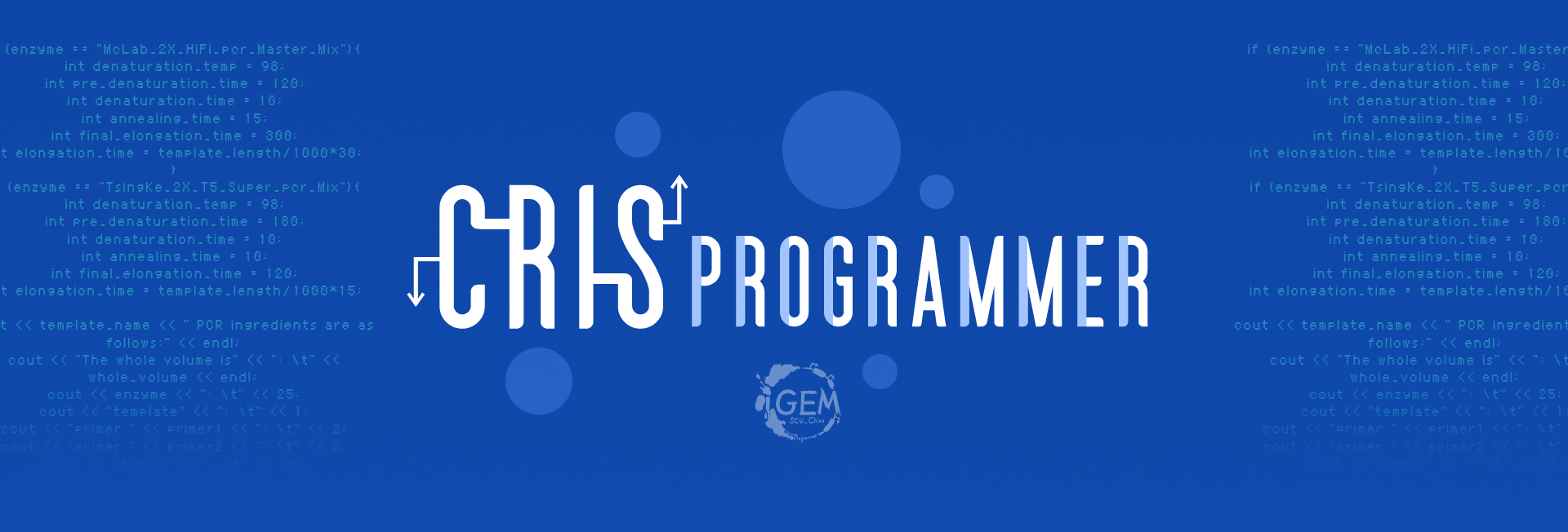
UESTC-China
Due to the lack of equipment in interlab. UESTC-China turn to our laboratory for the fluorescent microplate reader. We offered the access to the equipment and the instructions in analyses of their experimental data.
Peking
We met team Peking first on the 5th Conference of China iGEMer Community (CCiC). After intense and deep discussions on our project design, team Peking proposed that it is necessary to consider the kinetics properties of dCas9 protein and sgRNA-dCas9 complex, especially in multi-sgRNA systems. Besides, we realized that dCas9 proteins would be saturated by a certain sgRNA with its high concentration, which would disrupt the entire multi-sgRNA system. To solve these problems, team Peking provided us a prototype based on dCas9 activator and binding period delay causing by RNAi which will help us improve and perfect our project modeling in the future.
CDHSU-China
On July 27th, 2018, our team went to Shishi High School in Chengdu, Sichuan province to conduct an interactive lecture. This lecture was prepared to give this new team some suggestions and share our experiences with them. And what’s more, this lecture could be counted as the beginning of a long-term cooperation between their team (CDHSU) and ours.
We made adequate preparation for it, including consulting details in advance with related officials, understanding the needs of their team and determining the specific content and orientation of the lecture according to the feedback we had got.
The lecture was held in the biology competition base of Chengdu Shishi High School. We helped them to be conversant with the competition rules and laboratory regulations. They used a species of plant that was not on the safety white list, so we advised them to have a check to make sure that their subject does not violate the rules.
Since it is the first time for them to participate in the iGEM competition, there are many problems and obstacles in their experiments. Thus, it is necessary for them to get familiar with regulations of the competition as soon as possible for the purpose of researching in a more directional and objective way. So, we explained the concept of laboratory safety, Interlab, some technical methods and precautions commonly used in the experiments. And we also shared our experiences of experiments with them, such as what to do when you get an unexpected result
During the lecture, the members of the CDHSU listened to us very carefully and asked us in detail about what they did not understand of the video, such as the laboratory safety levels. At the same time, we found that they had some mistakes in the aseptic operation. So we reminded them of the importance of the aseptic operation, for it is the basis of successful experiments. We also gave them some failure examples.
Then it came to the Gibson assembly and the golden gate assembly. For most of the students in CDHSU, it was the first time for them to get to know these two technologies. But they showed great interest and came to understand the main methods and functions. They also tried to compare their strengths and weaknesses critically.
After that, they shared what they had got in this lecture. Although some complicated gene circuits were still somehow beyond their understanding, they got to know how to start an iGEM project after our patient explanation. We had a sense of achievement that this lecture did help them to some extent. On the other hand, through the communication we also realized that we should pay more attention to the simplicity and operability of our project -- CRISProgrammer.
After the lecture, we went to their lab, observed their experimental operation and put forward many constructive suggestions, such as the plates cannot be completely exposed to the air at any time. Also, we obtained more detailed information about their project, which enabled us to give them reliable advice later in the further cooperation.
Due to the lack of certain experimental equipment, the CDHSU came to our laboratory to use the fluorescent microplate reader to test their products. In September, we guided them to fill in the registration information and gave them a part in the Interlab section, which is described in detail in our collaborations.
The lecture in July was the beginning of the contact and cooperation between SCU_China and CDHSU, which also spread the spirit of iGEM and made contributions to the inheritance and development of iGEM.



Fig 1. We were explaining the laboratory safety

Fig 2. Group photo -- the left side is members of CDHSU, the right side is members of SCU_China and the adviser of CDHSU
SDU-China
SDU-China is a new team participating iGEM this year. At the very beginning of this year’s competition, we shared our team organization with them and talked about some details regarding the competition. During the project defense in winter training, they provided some meaningful suggestions to our project by watching the live we held in Bilibili, and we are really grateful to their help. We are looking forward the more deep and intensive communication and collaboration in the future.
